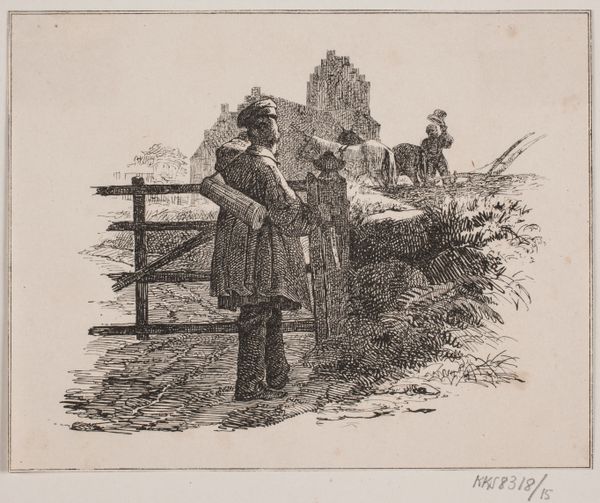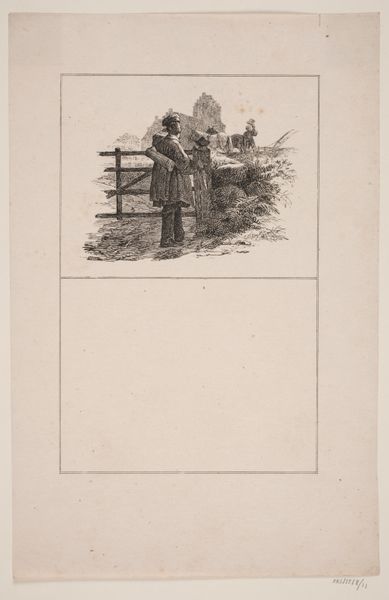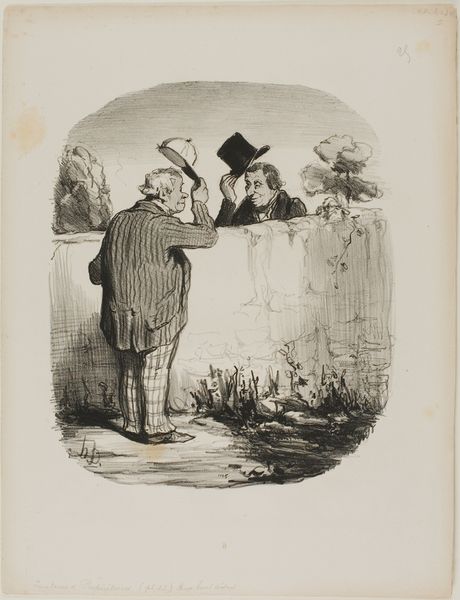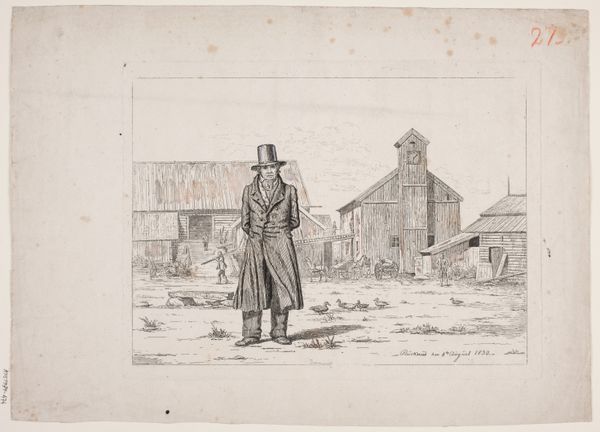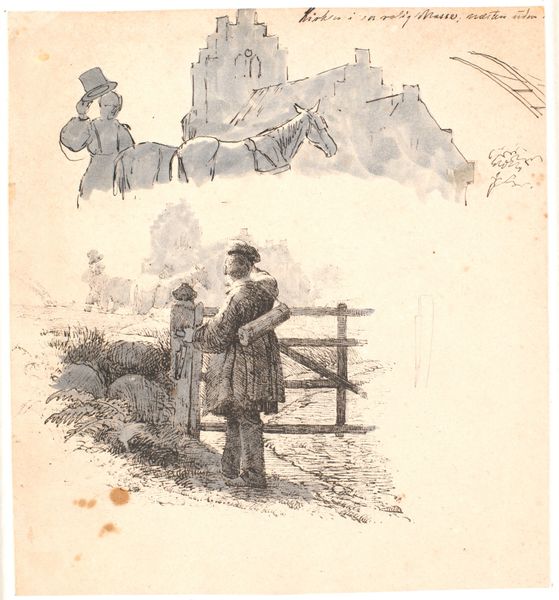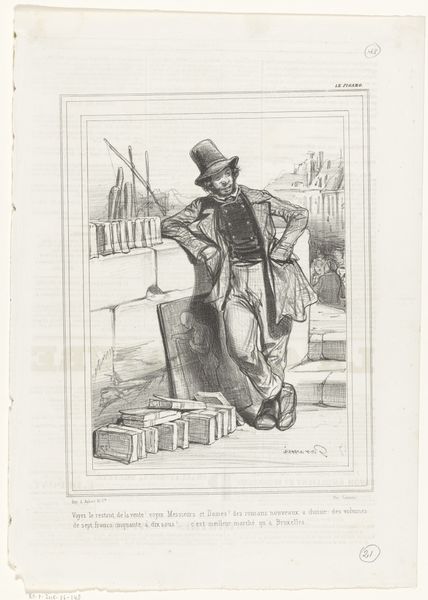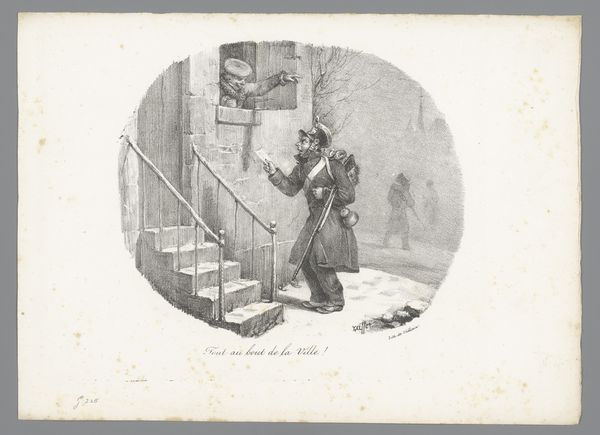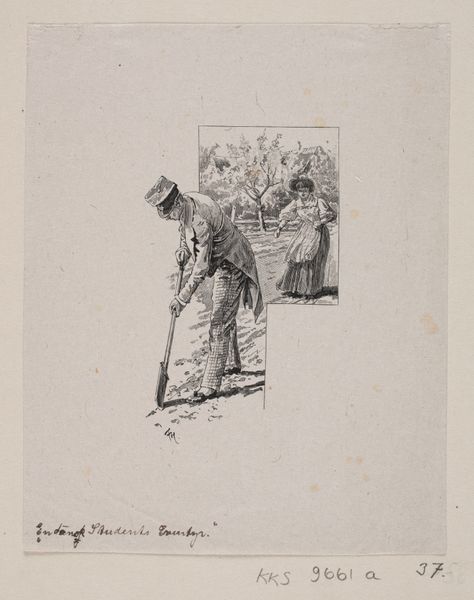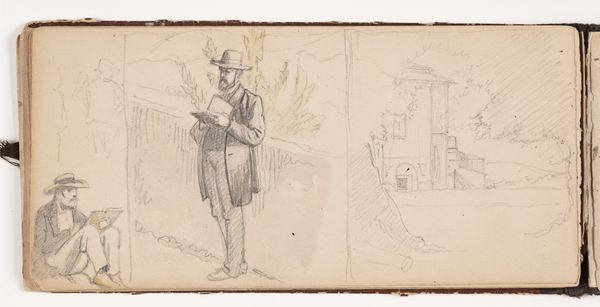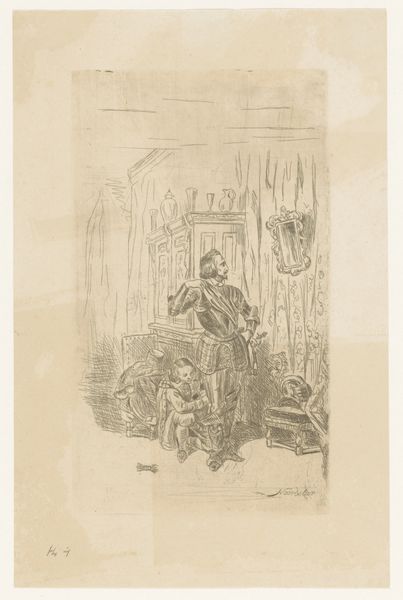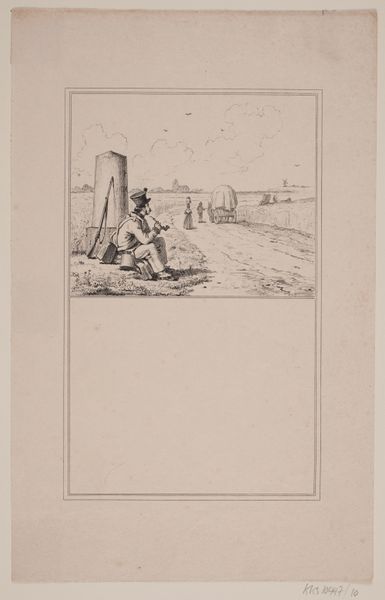
drawing, print, woodcut, engraving
#
drawing
# print
#
landscape
#
figuration
#
romanticism
#
woodcut
#
genre-painting
#
engraving
Dimensions: 119 mm (height) x 114 mm (width) (bladmaal)
Curator: Immediately striking is the stark, somber tone. A truly heartbreaking scene depicted with impressive economy. Editor: We're looking at "En jordefærd" – that's "A Burial" – created in 1845 by Axel Theodor Kittendorff. It’s an engraving and woodcut print that pulls you right in. Curator: Yes, Kittendorff has managed to distill a moment of profound grief using the basic tools of engraving. It really brings to the fore the artist's skill and labor involved in creating an image with such emotional weight. One imagines the dedication it takes to make visible an otherwise invisible emotion with simple tools. Editor: And consider the historical backdrop. This was Denmark during the Romantic era, with its complex negotiation between national identity and social upheaval. Images like this, documenting everyday life and death, played a vital role in forging a shared sense of experience and the artist's relationship to the society they operate in. We can also infer details about class and the roles available to these figures in the wake. Curator: Indeed. Notice the detailed rendering of the man's top hat and the stark contrast between his solid form and the weeping child by his side. The gate in the background hints at both confinement and potential transition from one form of social interaction to another. These small, handcrafted images were crucial commodities in a time when images were hard to make, adding a huge value on this sort of labour and craft. Editor: It highlights how social and familial support structures grapple with poverty and hardship. Is there communal care, and if not, why is this father walking the box alone, holding it so tightly in the absence of care structures that would hold him? Also, the use of a stream beneath the figures is important to note; how has water historically operated within contexts of burial, washing, or trauma? The scene isn’t merely a static display of sadness, but a statement of resilience within limited circumstances. Curator: And as prints, these images were endlessly reproducible, giving these personal moments universal qualities. Editor: This print challenges us to confront the precarity of life, the human cost of labor, and the powerful potential of art to witness, to question, and to perhaps even provoke change. Curator: Looking at it again, I'm struck by how little this sort of careful observation has changed in the contemporary. Editor: A potent reminder that grief and social inequalities endure.
Comments
No comments
Be the first to comment and join the conversation on the ultimate creative platform.
